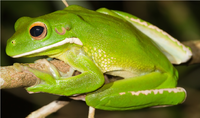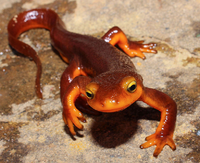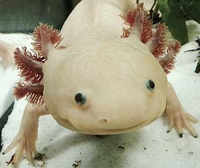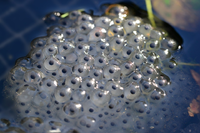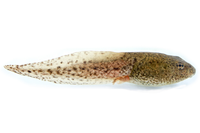Difference between revisions of "Amphibian"
| Line 31: | Line 31: | ||
===Life Cycle=== | ===Life Cycle=== | ||
{| class="wikitable" | {| class="wikitable" | ||
| + | |- | ||
| + | |Frogspawn | ||
| + | |Tadpole | ||
| + | |Frog | ||
|- | |- | ||
|[[File:Frogspawn.png|center|200px]] | |[[File:Frogspawn.png|center|200px]] | ||
| Line 39: | Line 43: | ||
|The young '''Amphibians''' have [[gills]] and can only live underwater. | |The young '''Amphibians''' have [[gills]] and can only live underwater. | ||
|Adult '''Amphibians''' can live on land or in water. | |Adult '''Amphibians''' can live on land or in water. | ||
| − | |||
| − | |||
| − | |||
| − | |||
|} | |} | ||
Revision as of 14:27, 5 August 2018
Key Stage 1
Meaning
An animal with a backbone that can live underwater and on land.
About Amphibians
- There are many different kinds of amphibian, not just frogs and toads.
- Amphibians lay soft eggs underwater.
- All young amphibians have gills but as they get older some lose their gills.
Examples
| A frog is the most well known amphibian. | Newts are amphibians. |
| A Salamander is an amphibian. | An Axolotl is an unusual amphibian. |
Life Cycle
| Frogspawn | Tadpole | Frog |
| Amphibians begin life in a soft egg. | The young Amphibians have gills and can only live underwater. | Adult Amphibians can live on land or in water. |
